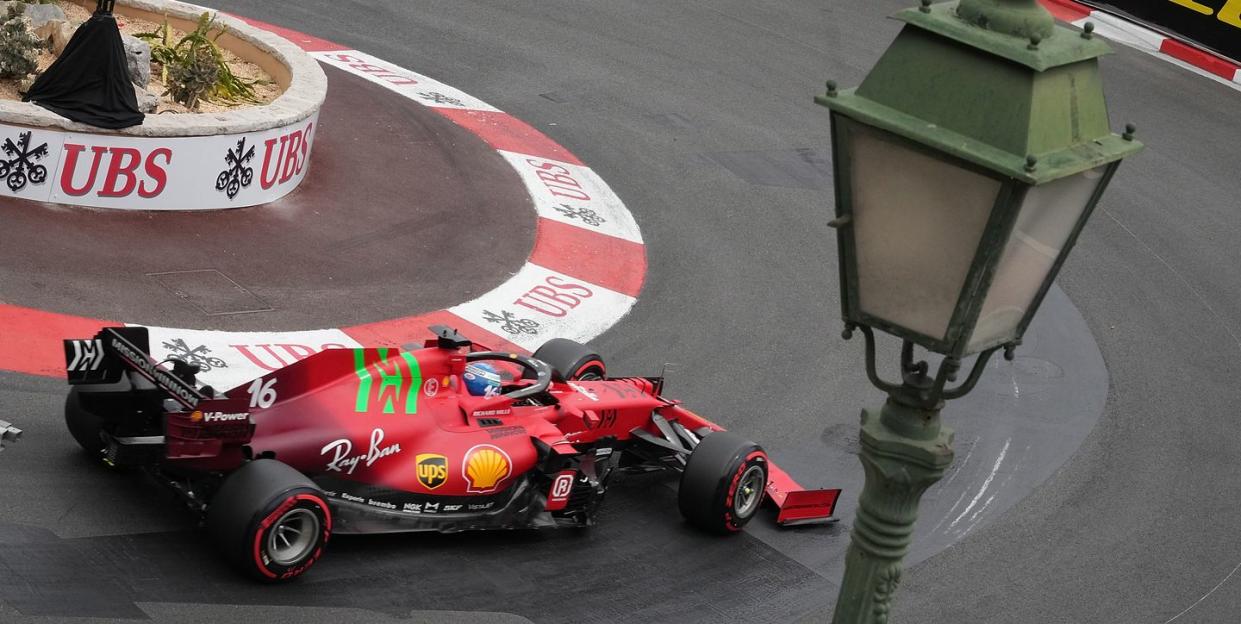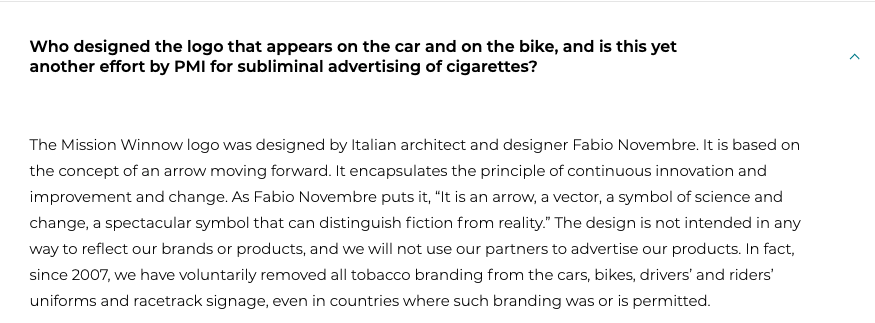Ferrari Once Again Pulls Mission Winnow's Totally-Not-Tobacco Logos Off its F1 Cars

Cigarette advertisements have been banned from Formula 1 for over a decade. Since 2006, no car can bear advertisements for cigarettes, tobacco, or tobacco products. And still, in 2021, a division of one of the world's largest tobacco companies is the title sponsor of Scuderia Ferrari. This past weekend, the team announced it was once again pulling that sponsor's logos from its cars for all races in the European Union. Doing so voluntarily allows the brand to avoid getting banned by regulators.
This comes as another blow to tobacco maker Philip Morris International's controversial involvement in F1 through its "Mission Winnow" campaign. Since day one, the program's intent has been obvious. While PMI cannot put its flagship Marlboro branding on a car, there's nothing prohibiting a separate venture—that just happens to be owned by a tobacco giant—from plastering its logo on F1 cars, as well as Ducati's factory racing motorcycles. For example, a tobacco company could spin up a new brand that describes itself as "[an] unconventional communications platform to share our journey and create a stage for constructive dialogue." That's how Mission Winnow's website describes the venture. Then, it could design a logo with a lot of subliminal nods to the Marlboro brand. Of course, that's not what happened here. The company's Frequently Asked Questions page gets ahead of that theory:
Who designed the logo that appears on the car and on the bike, and is this yet another effort by PMI for subliminal advertising of cigarettes?
The Mission Winnow logo was designed by Italian architect and designer Fabio Novembre. It is based on the concept of an arrow moving forward. It encapsulates the principle of continuous innovation and improvement and change. As Fabio Novembre puts it, “It is an arrow, a vector, a symbol of science and change, a spectacular symbol that can distinguish fiction from reality.” The design is not intended in any way to reflect our brands or products, and we will not use our partners to advertise our products. In fact, since 2007, we have voluntarily removed all tobacco branding from the cars, bikes, drivers’ and riders’ uniforms and racetrack signage, even in countries where such branding was or is permitted.

Despite this, regulators seem to misunderstand the wfforts of Philip Morris International, a company that has on multiple occasions been fined or investigated on charges of smuggling tobacco in Europe to avoid taxes and was involved in the largest tobacco settlement in U.S. history. If anything, Philip Morris' long history of attempting to suppress and undermine studies on the health risks of tobacco makes Mission Winnow's "goal" of "Assisting Scientific Transparency" all the more ironic. Yet governments don't always get it. Australia's strict advertising rules have kept the "Mission Winnow" branding off of Ferrari's cars at every Australian GP; the team voluntarily removed the logo for all European races in 2019, and didn't use it in any races in 2020.
It's fair to question why a company would spend tens, if not hundreds of millions of dollars to sometimes advertise a brand that offers no goods or services for purchase. Some would argue it's the only way left for a tobacco giant to advertise to an international audience, relying on subliminal messaging in nations and sports where explicit ads are illegal. Those people must be misguided. After all, Mission Winnow's site directly says that it is not a subliminal advertising campaign. Do you really think Philip Morris International would lie to us?
You Might Also Like

